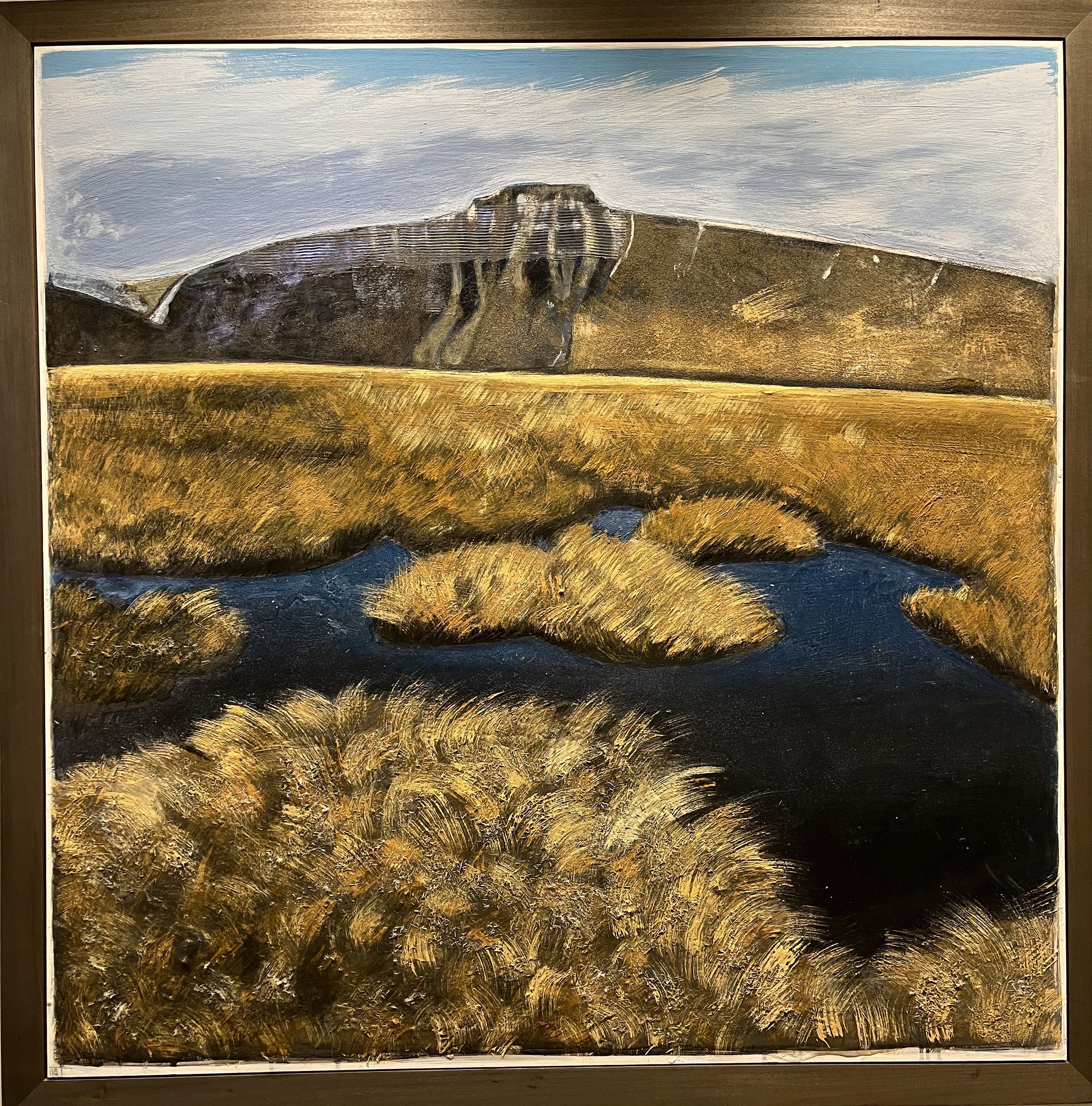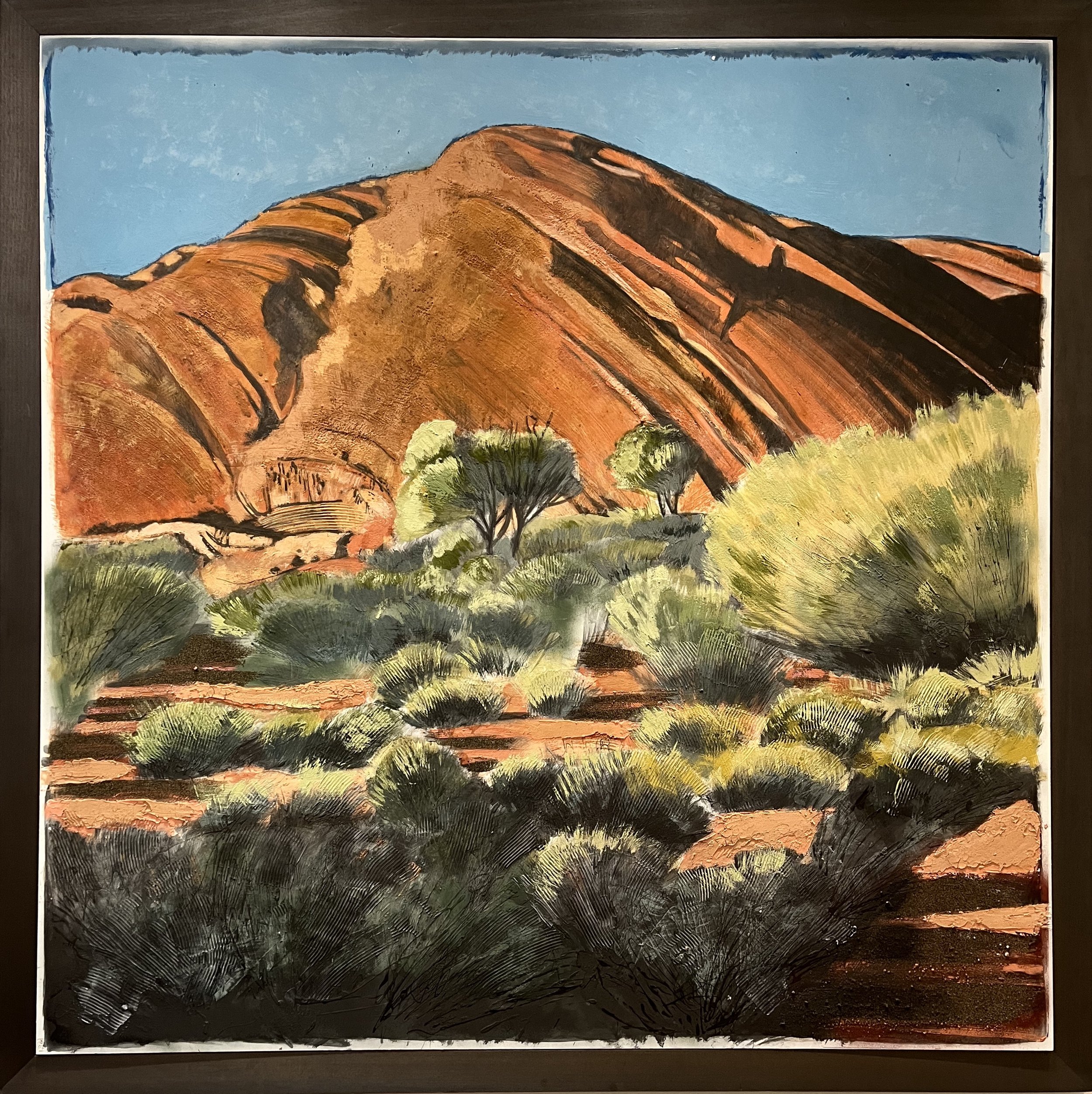Lydia Bauman
United Kingdom
Always an urban dweller I am nevertheless a painter of landscapes. Spanning cultivated lands and desert regions of the world, my paintings aim at portraying the character of each place, yet remain firmly dedicated to the integrity and beauty of the painted surface. I have always felt that the earthiness of land is best served not by the convention of oil or watercolour painting, but by my own deliberately textured and experimental method which relies on happy accidents of layering, sanding, scratching of materials such as plaster, resin, wax, texture gels, sand, grit, mica particles, graphite, gold leaf, patinas and of course pigments. The concreteness of those stuffs on the surface has a materiality akin to that of landscape itself and demands to remind viewers that this is not just a view but a painterly event with its own laws of composition, style and beauty.
My paintings are large and unapologetic. Mostly 4’x4’ or its multiples in diptychs and triptychs, they best serve tastes for bold feature pieces accommodated in airy, stylish interiors. As daylight travels across them or spotlight rakes the surface, you will find ever changing moods and surprising incidents of texture, reflection, colour.
As an owner of one of my pieces, you will be joining ranks of international collectors both private and corporate, including Saatchi & Saatchi, Deutsche Bank, The Dorchester, Linklaters, Amec Intl, United Airlines, State Street Bank, Gordon Ramsey, Slaughter & May and Warner Bros and countless privates homes in Europe, Israel, USA and Asia.
The Brecon Beacons, Wales. 122x122cm mixed media on panel.
1. What’s your background?
I was born in Poland, which I left for political reasons with my parents at the age of 12. It was in Israel where we lived for three years that my interest in landscape began at the age of 15. We moved to the UK when my father, an academic, accepted the Chair of Sociology at the University of Leeds, where I finished my schooling in the foreign language of English. After a Fine Arts degree at the University of Newcastle upon Tyne I completed an MA in Art History at the Courtauld Institute of Art, London.
My working life since has taken a straightforward direction of looking at, talking about, thinking about, writing about and making art. In other words, I have always been a freelance art history lecturer, art history writer and a professional painter.
2. What does your work aim to say?
I always think that if a painting needs an explanation, it already missed its point.
It's less about what it has to say, more how it makes you feel. I share with Matisse the belief that a work of art should be " like an easy armchair in which to rest after a day's work" : It should be life enhancing, beautiful, restorative. A critic once said : " Like a hypnotist, Lydia Bauman relaxes and recharges in one operation "
I'm happy with that.
3. How does your work comment on current social or political issues?
It doesn't. That of course is a comment in itself. My work is for those who need to take a break from the gritty 24/7 reality of news, newspaper headlines and statistics. That said, in its insistence on representation of nature and on the possibility of beauty, harmony and calm, it does reminds us of the urgency with which we need to protect those luxuries.
4. Who are your biggest influences?
Matisse, who convinced me that beauty is not an ugly word, Edward Hopper who claimed that all he wants to do is to " paint sunlight on the side of a house", Monet who arranged a landscape inside a square to show that it is a painting on a surface, not a view, my father who taught me not to be afraid to be myself and whoever decorated the ancient villas in Pompeii and showed me a way forward with the possibilities of plaster.
5. How has your art evolved over the years?
My art evolved each time I woke up with an appetite for experimentation. It has been a long quest for ever more effective equivalents of the feel and look of earth, stone, the filigree of tree branches, the luminosity of far horizons.
At first I worked on still life - looking for the equivalent textures, glazes and reflections of man made objects, fruits and flowers in the possibilities of layered plaster, collage, beeswax, sand or mica particles trapped in resin. My search was constant and obsessive. I remember my first thought on opening a tin of formula milk for my firstborn was " could this be a useful medium for my work?"
Once my technique and range of media was secure I moved onto landscape with which I am experimenting to this day. I vacillated between the regular patters of manmade landscapes and the unpredictability of wilderness with its scope for experimental markmaking, always ultimately held in check by my need for balance and harmony. My ultimate and most recent painting destination, after exhibitions devoted to the landscapes of India, Israel, Morocco, Australia, New Zealand and the British Isles, was New Mexico in the footsteps of Georgia O'Keeffe where I interpreted the same motifs made famous by O'Keeffe in her oil paintings, but in a newly expanded repertoire of techniques inspired by the landscape. You can see those on my website.
6. What does art mean to you?
Making the mundane visible and valuable to others.
7. What’s the most valuable piece of art to you?
The one that passes the test of time.
8. What’s next for you in the future?
Painting the landscapes of Japan.
Allowing Japanese aesthetics, traditional craft methods and local materials permeate and influence my own practice without resorting to either the tropes of European landscape painting tradition, or to pastiche or cultural appropriation of Japan itself. Potentially the biggest change to my work to-date.
Uluru, Australia. 122x122cm mixed media on panel.


